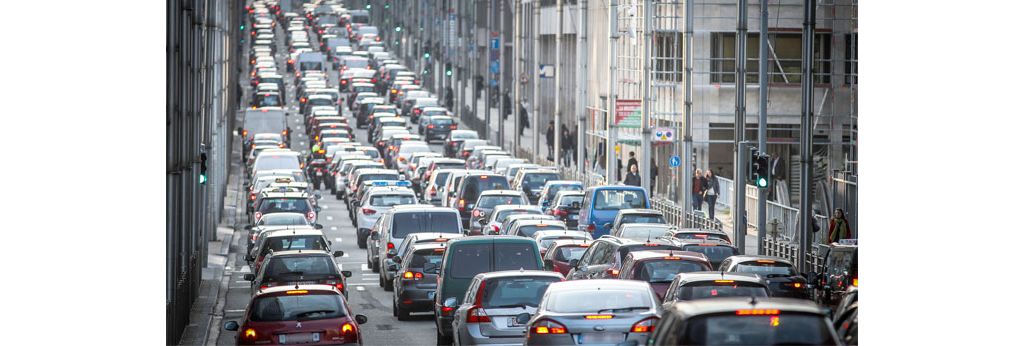Will cyclists and walkers reclaim city streets from cars?


Editor’s Note: This article was originally published by the European Transport Forum (ETF), a platform for open debate on the future of European Transport, to provide insights on hot topics dealing with mobility. The views expressed do not necessarily reflect an official position of Volvo.
Furthermore, this article was originally published on December 01, 2020 and updated for accuracy and comprehensiveness
For this reason, an increasing amount of countries, notably in Europe, initiated the work on developing a national cycling strategy – crucial policy tool for countries to improve and expand cycling’s modal share at the national level – according to a report
published by the European Cyclist Foundation (ECF). Similarly, the European Commission recognised the importance of prioritising cycling at local and national levels through its Efficient and Green Mobility package, published in December 2021. At a press conference to present the package, European Commission Executive Vice-President Frans Timmermans emphasised that the new urban mobility framework specifies in detail how cities are going to support zero-emission public transport and “develop better infrastructures for walking and cycling, and green the cars.” Policymakers are finding themselves under more public pressure for faster implementation of the “Net Zero emission areas in cities” which could increase the global demand for electric trucks and busses.
The package overall highlights that a shift that has been happening in both policies and people’s mentalities. While the more usual modes of transport won’t be fully replaced in the short term, cyclists and to a certain extent walkers have secured a very important position within that framework.
ORIGINAL ARTICLE 01/12/2020: How has the coronavirus pandemic changed the way we think about transport and mobility? In March, when most European countries first imposed lockdown measures to contain the spread of the disease, city streets emptied, creating a spooky calm. Many urban authorities then seized the moment to reclaim streets from cars and trucks – and give them to cyclists and pedestrians. If confirmed, the shift to walking and cycling could emerge as one of the most visible legacies of Covid-19.
While the lockdowns have been eased, there is still uncertainty about transport modes. Some people are still working from home. There has yet to be a major shift from cars to public transport, as many commuters are wary of confined spaces in trains, buses and trams, all designed to operate at high densities.
Temporary reallocations kept in place
But it is the switch to cycling and walking – sometimes dubbed active mobility – that is most intriguing. While it began during the lockdowns, many authorities have built on the momentum to redesign their streets. From Berlin to Barcelona, from Brussels to Bogotá, key roads and spaces have been handed from cars to bicycles.
Other actions have been taken to support pedestrians: many cities have switched to automating crossing signals so that pedestrians do not have to touch “beg buttons” that may be contaminated.
Some of these schemes were initially temporary reallocations of road space so that key workers could keep moving and residents in coronavirus lockdown stay healthy and active while socially distancing. But many were kept in place after the lockdowns eased.
The European Cyclists’ Federation (ECF) has been collecting data about the measures since the virus struck in its COVID-19 Cycling Measures Tracker which says European cities and national governments have allocated at least €1.02 billion to active mobility. Some 36 of the EU’s 94 biggest cities have announced cycling measures, over 2,300 km of cycling infrastructure has been announced, with more than 1,095 km have already been implemented.
Stricter Safety standards
The ECF has urged authorities to go further, enforcing stricter safety standards like urban speed limits and truck visibility measures, as well as subsidies for bike and e-bike purchases to ensure that the shift sticks.
There is backing from national governments too. In July, Benelux countries published a plan for cycling to bolster the EU’s virus recovery efforts, saying it has annual “global benefits of €150 billion”, including €44 billion linked to bike tourism, and that it is a job creator. It suggested low VAT rates for e-bikes, better coordination of cycle paths, and guarantees from rail companies of space on trains for stowing bikes.
These initiatives have support at EU level, from both the European Commission and MEPs. “We need a paradigm shift. The EU needs to fund the daily mobility of European citizens through a dedicated fund for bicycles,” said Karima Delli, chair of the European Parliament’s Committee on Transport and Tourism.
Paradigm shift
In theory, redirecting resources to active mobility should be easy. Cities around the world have published plans and manuals encouraging cycling and upgrade walking infrastructure, often to improve air quality, combat the climate crisis or even tackle obesity. The required facilities are relatively cheap to build, and there are many guidelines on how to best design safer streets for walking and biking. But governments and city authorities have often dragged their feet on implementing them.
However, the pandemic has changed the paradigm. Many cities now see the crisis as an opportunity to overcome key vested interests and roll out the plans that had been gathering dust in their offices. If the new facilities and infrastructure become permanent, it could mark a huge change in personal mobility.